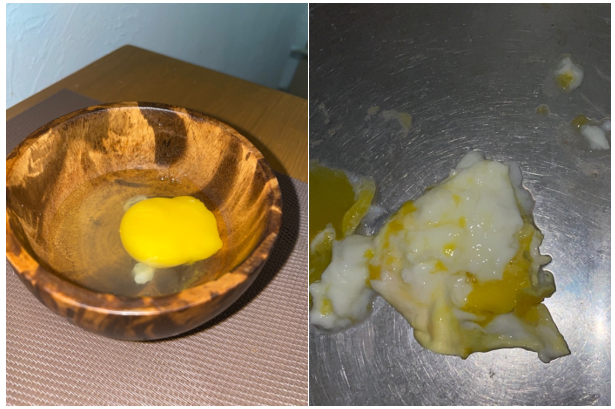Denaturation is the process of breaking down the secondary and tertiary structures of a protein by external factors such as temperature. As a result of denaturation, the complex spatial structure of the polymer is broken down to the primary chain of amino acids. Denaturation can be reversible when after returning to initial conditions (cooling), the amino acid chain reestablishes its initial spatial state. In contrast, irreversible denaturation is a process in which the primary chain is also destroyed. As a result, the protein can no longer assume its original form after denaturation. The egg protein in this paper is an excellent example of an eye-visible pure protein that undergoes irreversible denaturation.
Photo 1 on the left shows a raw chicken egg even before denaturation. After heat treatment with boiling water for one minute, the protein has set and become firmer, as shown in Photo 1 on the right. This change from a murky-transparent colloidal solution to a thick, white substance is an example of denaturation, and it is irreversible. Even if the cooked egg is cooled, it will not return to its original appearance because the amino acid chain of the egg albumin has irreversibly broken down. The denaturation process proper began the moment the raw egg was lowered into the pot: the high temperature of the boiling water almost immediately transformed the protein. Visually, this was observed as the transition of the liquid phase into long white strands. After minutes of cooking, all the protein was only white, without a precise shape.
